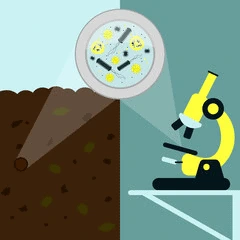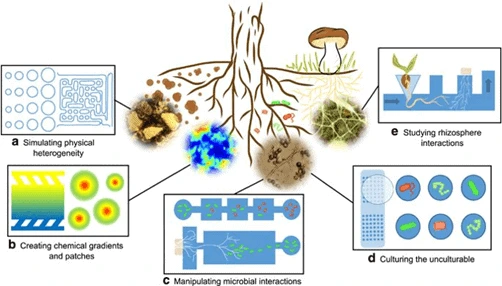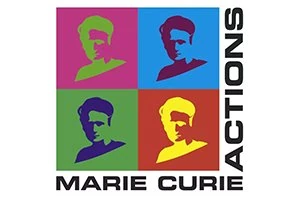Soil-on-chip devices in the study of microbial communities: Active Matter
Microfluidic soil-on-chip devices: introduction
This project is completed now. If interested, feel free to contact us.
 Soil-on-chip devices will have many applications. Soil is a complex environment defined by a main characteristic: heterogeneity.
Soil-on-chip devices will have many applications. Soil is a complex environment defined by a main characteristic: heterogeneity.
The conditions of this system, such as topography and composition, are highly irregular and often prone to changes, leading to the development of diverse and interlinked microbial communities with a broad set of requirements for their survival.
Many of these requirements can be challenging to control artificially, namely the communication and interactions between microbial species. For that reason, even to this day, very few of the soil-dwelling microorganisms can be cultured in a laboratory and be adequately studied.
Since direct monitoring of actual soil samples often implies a fundamental alteration of the medium to the extent where the natural properties and original behavior are lost, the need arises for a device to recreate such conditions while allowing analysis.
Microfluidic soil-on-chip devices: project description
What is more, given that most of the microbes in the soil behave as active matter (composed of large numbers of active “agents,” each of which consumes energy to move or to exert mechanical forces), information about its movement and expansion through the available space depending on the set conditions can also be extracted. This offers valuable insight into environmental science, microbiology, and physics.
This project aims to overcome many obstacles in microbial monitoring through microfluidics, where some general advantages like transparency, the tailored shape of microfluidic chips, and the possibility of establishing chemical gradients are exciting.
As a result, many valuable applications can be derived from a better understanding of the soil system, including bioremediation, enhanced crop growth, and the development of new antibiotics. This is what soil-on-chip devices aim to achieve.

Related content & results from this project
In the light of the Active Matter project, we developed a microbiology incubator.
We also published a review about soil-on-chip devices, and another one about microswimmers chemotaxis behavior.
Funding
This soil-on-chip project has received funding from the European Union’s Horizon research and innovation program under the Marie Sklodowska-Curie grant agreement No 812780 (ActiveMatter project).



Researcher

Jesús Domínguez
Marie-Curie PhD Candidate Elvesys/Gothenburg University
- Traineeship in Nanoparticle Characterisation (Joint Research Centre in Geel, Belgium)
- Double University Degree in Physics and Materials Engineering (Universidad de Sevilla, Spain)
Areas of expertise:
Physics, physical chemistry, materials science, rheology, chemical engineering, nanotechnology, particle characterisation, emulsions.